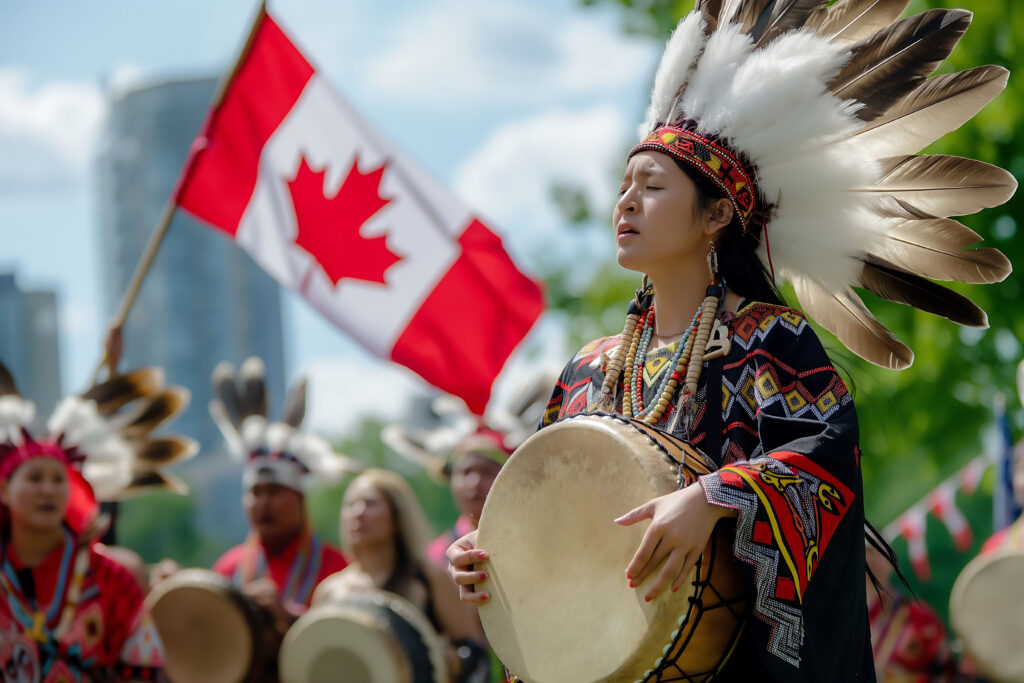Physical Address
304 North Cardinal St.
Dorchester Center, MA 02124
Physical Address
304 North Cardinal St.
Dorchester Center, MA 02124

Second-gen voices redefine Canada’s cultural fabric
Canada has long been recognized as one of the most multicultural nations in the world, shaped by waves of immigration and the diverse communities that have settled within its borders. While first-generation immigrants bring their cultural roots and traditions with them, it is often the second generation—those born in Canada or raised in the country from a young age—who play a pivotal role in shaping the broader national identity. They grow up straddling two worlds: the heritage of their parents and the cultural context of Canadian society. This unique position places them at the heart of an evolving Canadian identity, one that is constantly adapting and expanding.
Second-generation immigrants often navigate a balance between the traditions passed down from their parents and the everyday realities of Canadian life. This dual experience allows them to embrace their cultural heritage while simultaneously interpreting it in ways that resonate with Canadian values. For instance, they may uphold family customs, festivals, or culinary traditions while also engaging with mainstream Canadian culture. This fusion brings new dimensions to what it means to be Canadian, enriching the collective identity.
The process of balancing two cultural influences can also serve as a powerful reminder of Canada’s broader ethos of multiculturalism. Unlike assimilationist models found in other parts of the world, the Canadian framework encourages the preservation of cultural identities while fostering a sense of belonging to a shared society. Second-generation immigrants embody this principle through their ability to comfortably move between multiple cultural spaces and blend them seamlessly.
Over time, second-generation Canadians become cultural interpreters within both immigrant communities and the wider society. They help translate traditional practices for their peers and friends, making cultural customs more accessible and visible. This creates bridges that foster greater mutual understanding and appreciation among Canadians of different backgrounds. The outcome is not the loss of heritage, but rather its reimagining in a way that feels relevant to current and future generations.
In many ways, second-generation experiences demonstrate the evolution of culture in motion. Rather than being static, culture adapts, transforms, and reshapes itself as it engages with new contexts. By negotiating their place between heritage and modern Canadian experiences, they underscore the fluidity of national identity and push Canadian culture toward greater inclusivity and dynamism.
Youth play an especially pivotal role in shaping collective identity because they are often the first to question inherited norms and develop new ways of thinking. Second-generation immigrant youth, situated between two cultural frameworks, often challenge stereotypes and widen understandings of belonging. Their lived realities reflect the plurality of modern Canada, where multiple languages, traditions, and perspectives coexist, influencing how society at large envisions itself.
Through education, activism, and community engagement, second-generation youth help redefine what it means to be “Canadian.” Their presence in schools, workplaces, and civic spaces encourages dialogue around inclusivity and equity. By advocating for greater representation in media, politics, and cultural institutions, they push national narratives to be more reflective of Canada’s diverse reality. Youth-driven movements often stem from their need to reconcile personal identities within a wider national framework.
Technology and social media amplify their influence, giving second-generation Canadians prominent platforms to share stories, raise awareness, and bridge divides. Online communities have become spaces where cultural hybridity is embraced, normalized, and celebrated. By sharing experiences that blend heritage with Canadian realities, they are actively shaping how future Canadians will perceive national values such as acceptance, diversity, and innovation.
In this sense, second-generation youth are not only participants but also leaders in shaping the Canadian identity of tomorrow. They show that national identity is not fixed but is instead co-created by each new generation. Their voices highlight the importance of inclusivity as a foundational Canadian value, ensuring that future definitions of belonging will be even more expansive.
The influence of second-generation immigrants extends beyond their own cohorts; it ripples out across generations. Parents and grandparents often adapt their cultural practices based on the interactions and reinterpretations of younger family members. Simultaneously, Canadian peers also adopt and integrate elements of immigrant traditions, embroidery of festivals, cuisine, fashion, or values into their own sense of identity. This interplay builds a shared cultural space where multiple heritages contribute to national life.
Second-generation Canadians also help dismantle rigid notions of identity by modeling how multiple affiliations can coexist harmoniously. They prove that Canadian culture does not require individuals to choose between heritage and national belonging, but rather to embrace a composite identity. Through friendships, intermarriage, artistic expressions, and professional contributions, they demonstrate that cultural multiplicity enriches rather than fragments a society.
Over time, this cultural integration fosters more inclusive policies and attitudes within Canadian institutions. Schools, workplaces, and government entities respond to the evolving identity landscape by emphasizing cultural awareness and representation. Second-generation Canadians often serve as advocates in this process, pushing for recognition of diverse experiences and ensuring inclusion is woven into the fabric of Canadian life.
Ultimately, the role of the second generation is to both inherit and transform—carrying forward the essence of ancestral cultures while embedding them into the evolving Canadian story. Their contributions build bridges across time and place, helping Canada remain true to its multicultural promise while creating new possibilities for the generations to come.
Second-generation immigrants stand at the crossroads of heritage and new beginnings, and it is their lived experience that continues to make Canadian culture dynamic and inclusive. By blending tradition with modern identity, they model how diversity can serve as a unifying force rather than a dividing one. Their role in shaping shared values, promoting inclusivity, and bridging global perspectives with local realities ensures that Canadian identity remains resilient and ever-evolving. In many ways, they are the storytellers and architects of a broader national narrative—one that embraces difference while forging unity, and one that reflects the true essence of Canada’s multicultural vision.